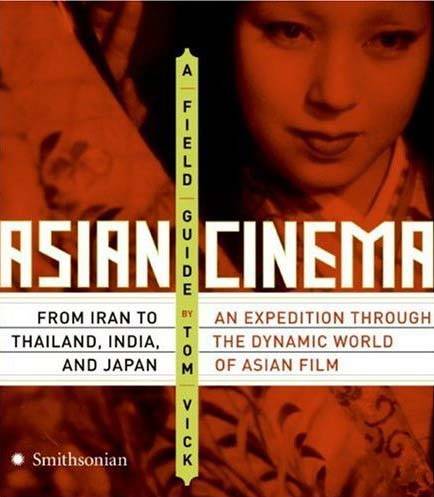|  Asian Cinema: A Field Guide Asian Cinema: A Field Guide
by Tom Vick
Collins, 2008, US, $17.95, ISBN-10: 0061145858
Check page samples HERE
Book content
The First Complete Guide to Asian Film
Asian Cinema: A Field Guide is the first book to provide a complete overview of the past, present, and future of the world's most dynamic and influential filmmaking region.
Over 300 films from China, India, Japan, Korea, Iran, and Taiwan, as well as the emerging films of Kazakhstan, Tajikistan, Thailand, Malaysia, the Philippines, Vietnam, and Sri Lanka, are all included here. Illustrated with more than 100 B&W film stills and photographs.
Part 1: The old guard: China, Japan, India
Part 2: Post-war booms: HK, Korea
Part 3: Recent Arrivals: Iran, Taiwan
Part 4: New Players: South, South East, Central Asia, Middle East
Part 5: Where to go from her: Websites and books
About the Authors
Tom Vick is the film programmer for the Freer and Sackler Galleries of the Smithsonian Institution, where he organizes film series and retrospectives of Asian films. He lives in Rockville, Maryland.
Review
Tom Vick’s attempt to cover a large number of film industries from the Asian continent In Asian Cinema: A Field Guide deserves praises. Yet many things are missing from this guide that should have been subtitled ‘An American Guide to Asian cinema’.
The book starts with a well researched chapter on the Chinese film industry but doesn’t quite follow through. The more we read through the book, the more we feel the author discusses films from his personal DVD collection or seen on US big screens or in US film festivals. Fair enough, Vick wants to discuss films available to most of US moviegoers. But that is missing on 95 % of the production of a country.
For instance, this reviewer regrets that in Vick’s historical account of the Chinese cinema no more lines were dedicated to the Shanghai film industry from the 1930s and 1940s, equally important in quality or quantity, if no more, than films from the fifth and sixth generation.
What’s more, the Japan and Indian parts are thin. They barely scratch the surface of these two giant cinema centres. In addition, the Japanese anime section hardly uncovers anything a film fan with an Internet access wouldn’t know by now.
It’s understood that there are so many movies, genres and filmmakers to talk about that sometimes recent films and contemporary directors take precedence over old classics or seasoned film talents.
Evidently each territory deserves a book on its own and to say everything within 288 pages is impossible. But a lot of info is missing and sometimes we feel the author over-simplified and approached these cinemas with an outsider eye, out to cater to the reader’s crave for exoticism.
We too have made a guide. A kind of guide to the guide with a list of good points and of points we felt weak.
On the plus side:
Vick uses a straightforward prose to describe foreign language cinemas, far from tedious academic dissertations.
A lot of illustrations (though in black and white).
A list of websites (still not very substantial) and a list of books of references for each type of cinema is given at the end of the book. These references gathered in one place are tremendously helpful for the moviegoer.
Each chapter starts with a succinct historical and cultural background of the specific territory it covers.
On the not-so-convincing side:
Some side-bars provide interesting info (though arguable, like the ‘Kung fu hip hop connection’ that personally ranks on the bottom of my list of connections with the kung fu film genre), but are not numerous and detailed enough. Maybe the specific and popular genres to one territory should be discussed (such as the Hong Kong genre Huang Mei Diao, nonsensical comedies, or wu xia pian, the ghost cinema tradition from Thailand and Malaysia, etc…) while adding more specific cultural and historical background. After all, Asian cinema is not just a mix bag of art-house films and action flicks.
The last chapters evoke all too succinctly some other Asian territories cinema, like Bhutan, Nepal and Mongolia. Much more detailed material on these territories can be found on the Internet.
We wish we had…
We wish we had a ‘Top 20 or Top 50 of films to discover’ stressing the filmic specificities from each territory.
The guide lacks also some chronological pointers.
A list of the popular genres, films and movie personalities in each territory could be interesting.
What’s more, all these territories are probably unknown from the common US readers, so maybe a map to locate each place could be interesting.
In Short:
Overall, anyone interested in a quick overview of Asian films should buy this book that, despite what we said above, offers a pleasant reading. Anyone who wants more details or a volume that delves into the country culture, literature and history that forge its cinema or a few reviews of a bunch of must-see films should get more specialized books.
Thomas Podvin, Nov 21, 2008
|
